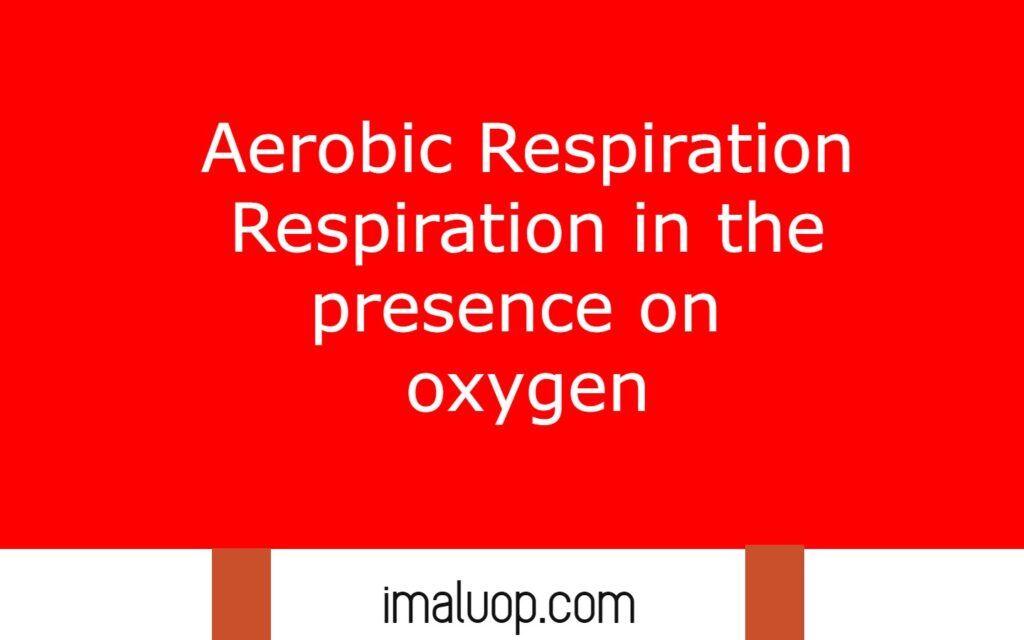In living cells energy is necessary for maintaining different types of cellular activity and the required energy comes from the food we take. In living cells glucose breaks down to release metabolic energy and it can occur in presence of oxygen( Aerobic Respiration) or absence of oxygen( Anaerobic Respiration).
In general the higher organisms prefer to use oxygen for respiration. Because glucose breaks down completely in the presence of oxygen which utilise the glucose efficiently.
Another reason for preferring the aerobic respiration is because the energy released during the aerobic respiration is much higher than the energy released during anaerobic respiration. Most of the advanced plants and animals respire aerobically for maintaining their cellular activity.

If we notice the chemical reaction of aerobic respiration then we can see that oxygen reacts with glucose to produce carbon dioxide, water and ATP release. The energy released is stored in ATP molecules and used for the requirements in our cells.
In most multicellular organisms the aerobic respiration continues to supply the metabolic energy everytime to keep a cell active. During respiration organisms take oxygen from the environment to break down the glucose molecules and release carbon dioxide gas into the environment.
Even plants require oxygen for aerobic respiration and produce carbon dioxide as a byproduct. Plants take oxygen from the environment through the stomatal aperture on their leaves, epidermis and stem.
Aerobic respiration occurs in different steps in our body cells. We will discuss them all one by one below.
Different Stages in Aerobic Respiration:
The process of aerobic respiration or breakdown of glucose in the presence of oxygen occurs in four stages – glycolysis, formation of acetyl coenzyme A, citric acid cycle and electron transport chain.

Glycolysis: Glycolysis occurs in the cytosol of the cell which is the primary step of respiration. In glycolysis glucose molecules are broken down into two NADH molecules and two molecules of ATP in the cytosol of the cells. The NADH molecules and ATP are further used for the next process of aerobic respiration.
Formation of Acetyl Coenzyme A: In this step of aerobic respiration acetyl coenzyme A is produced from pyruvate. In mitochondria oxidation of pyruvate occurs which produce 2-carbon acetyl groups. 2-carbon acetyl produced in this step joins with coenzyme A to produce acetyl coenzyme A.
Citric Acid Cycle or Krebs Cycle: It is the third step of aerobic respiration when citric acid is produced. In this step acetyl-coenzyme A joins with oxaloacetate to produce citric acid which again goes through some series of chemical reactions to produce one molecule of ATP, two molecules of carbon dioxide and reduced NADH and FADH.
Electron Transport Chain: It is the final step of aerobic respiration when a lot of energy is released in the form of ATP molecules. Electron transfer from NADH and FADH which release 34 molecules of ATP from a single glucose molecule.
Important Points on Aerobic Respiration:
Aerobic respiration in cells breaks down glucose, amino acids and fatty acids to release the metabolic energy in the form of ATP in our cells.
In the mitochondrial matrix of our cells pyruvate convert in acetyl coenzyme A.
To break down a single glucose molecule completely, cells perform krebs cycle two times.
In the inner mitochondrial matrix some special protein complex is present which is required to transfer electrons from one molecule to another molecules during electron transport chain.
Frequently Asked Questions
What is the End Product of Aerobic Respiration?
Glucose breaks down in the presence of oxygen to produce six molecules of carbon dioxide, six molecules of water and 30 molecules of adenosine triphosphate.
In Our Cells Where the Aerobic Respiration Takes Place ?

All the stages of aerobic respiration do not occur in the same cell organelles or in a cell; some stages occur in cytosol and some occurs in mitochondrial matrix.
Resource: Aerobic Respiration
Read More: Accumulation of Variation During Reproduction
Hi Everyone!!! Welcome to Imaluop. Imaluop always try to learn some new and he want to share to other people. Here we will try to learn various topics on Science, specially on Biological Sciences.
